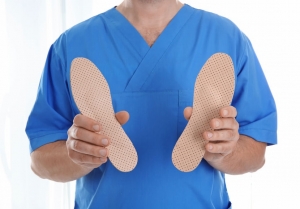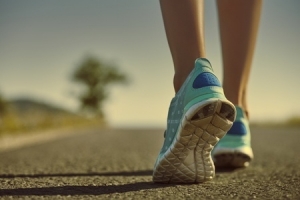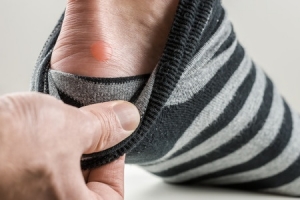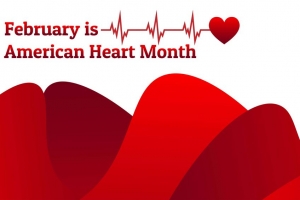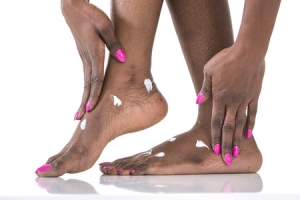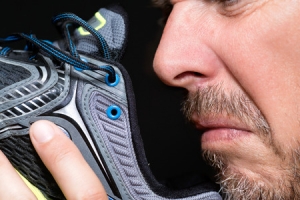Connect With Us
Blogs
Dealing with Flat Feet
At Superior Foot & Ankle Care Center, we find that many of our Douglas Park/Los Angeles County area patients are surprised when they receive a diagnosis of flat feet from our podiatrists, Dr. Victoria M. Foley and Dr. Constance Ornelas. That’s because the symptoms don’t immediately point to a problem in the arch of your foot, which is the source of flat feet discomfort. Patients may experience:
- Pain in the foot (particularly the middle of the foot or heel), ankle, lower leg, knees, hips or back
- Localized swelling
- Decrease in foot flexibility
- Feelings of fatigue if feet or lower legs
What Causes Flat Feet?
There is a wide variety of possible causes of partial or total lack of an arch in your foot. These include:
- Hereditary tendency
- Failure in childhood for the arch to fully develop normally
- Aging
- Weight gain due to pregnancy or obesity
- Injury or trauma
- Medical conditions such as arthritis
Due to the many potential sources of flat feet, it’s essential that the foot doctor examines you and determines the cause and severity of the deformity. The podiatrist may also want to get an x-ray of your foot to confirm the diagnosis.
Treatment Options
The treatment the foot doctor prescribes will depend on several factors, including your level of discomfort and the ultimate source of the condition. In some cases, wearing more supportive shoes and limiting activities that require you to stand or walk for extended periods may be enough. Additional treatment options include:
- Icing the painful or swollen area
- Over-the-counter anti-inflammatory medications
- Stretching exercises and physical therapy
- Arch supports, foot braces or supportive tape
- Custom orthotics
In some cases where the arch is collapsed or not present, the podiatrist may want to perform reconstructive surgery to correct this deformity. To have your foot evaluated and learn what options are best for you, contact our Long Beach office by calling: (562) 420-9800.
Simple Steps to Improve Foot Health
At Superior Foot & Ankle Care Center, we want all of our Douglas Park/Los Angeles County area patients to have the healthiest feet possible. Often, small changes can make a huge impact on the condition of your feet. Below are some simple ways you can improve your podiatric health and reduce the risk of common foot disorders.
- Be mindful of changes in your feet. Inspecting your feet regularly will help you spot anything unusual or different about your feet, and that is important in detecting problems in their earliest stages. Unexplained bruising, swelling, changes in skin color or temperature, growths, and toes that look like they are moving out of place should all be brought to the prompt attention of our podiatrists, Victoria M. Foley and Dr. Constance Ornelas.
- Keep them clean. Simply washing your feet every day with soap and water will go a long way toward preventing infections. Be sure to dry your feet completely before putting on socks, paying special attention to the spaces between your toes. Accumulating moisture there can create a breeding ground for athlete’s foot.
- Choose your shoes wisely. To prevent a whole host of foot disorders such as bunions, Haglund’s deformity, and plantar fasciitis, wear shoes that are well-designed and fit properly. As many as 9 out of 10 people are wearing shoes that are too small for them! Get your feet professionally measured. Invest in quality shoes with good arch support and cushioned insoles.
- Keep your feet covered, especially in public places. It is the single biggest way to prevent fungal infections and warts, which are spread by direct contact.
- Take care of the toenails. Trim toenails straight across and not so short that the skin on the sides can overlap the nail and cause an ingrown toenail. Always file nails straight across and get rid of rough or jagged nails promptly.
Good foot care isn’t hard or time-consuming, and your feet will reward you with many years of active life. If you have questions or concerns about any aspect of podiatric care, don’t hesitate to contact our Long Beach office by calling: (562) 420-9800.
Celebrating National Nutrition Month
At Superior Foot & Ankle Care Center, we know there’s a direct connection between what you eat and your feet. Eating a well-balanced and nutritious diet can positively impact your podiatric health in several ways:
- Decreasing the amount of foot pain you experience by helping you attain and maintain a healthy weight
- Lower your risk for developing many lower extremity disorders like flat feet, sesamoiditis, heel pain and more
- Reducing inflammation in joints, ligaments, and tendons
- Helping prevent systemic health problems like diabetes and heart disease, which can have harmful effects on your feet
Healthy Changes
Unfortunately, for many Douglas Park/Los Angeles County area patients, eating healthy seems like deprivation. However, many changes can be painless and even enjoyable. Try some of the tips below and aim to incorporate more nutritious choices into your menus slowly. Create more colorful plates. Eating a rainbow of different kinds of produce will help ensure that you are getting a well-rounded variety of vitamins, minerals, and antioxidants into your diet.
- Cook more meals at home. Make it a family affair and involve your children in meal planning, shopping, and preparation.
- Travel the world through your menus, at home and in restaurants, sample the wide variety of healthful cuisines available from other countries. Don’t be afraid to experiment with new spices and cooking methods like roasting and steaming the preserve nutrients without adding fat or high-calorie ingredients.
- Eat seasonally. Fruits and vegetables that are in season or, better yet, locally grown are going to be fresher, more nutritious, and delicious. Consider joining a CSA (Community Supported Agriculture) and learn about the growing season in your part of the country.
Eating a nutritious diet is just one way to be proactive in the health of your feet. If you want to learn more or you are currently experiencing any lower extremity discomfort, make an appointment to see our podiatrists, Dr. Victoria M. Foley and Dr. Constance Ornelas, by calling our Long Beach office for an at (562) 420-9800.
What’s Stopping You from Exercising?
At Superior Foot & Ankle Care Center, we want to know, do any of our Douglas Park/Los Angeles County area patients think exercise isn’t good for you and your feet? Who doesn’t want to have better circulation, lose or maintain a healthy weight and decrease the risk for several foot disorders (such as plantar fasciitis and arthritis) as well as conditions such as diabetes and heart disease? Of course, we all do. But even with that being the case, many of us still can’t manage to make regular exercise a part of our routines. Below are some common blocks to exercise and how to break through them.
Barrier: You experience foot or ankle discomfort when you exercise.
Breakthrough: There are many potential reasons for podiatric discomfort ranging from injury, chronic disorders, or even improper footwear. The first step to figuring it out is to make an appointment at our Long Beach office (562-420-9800) so that our podiatrists, Dr. Victoria M. Foley and Dr. Constance Ornelas, can examine your feet and find the source of your pain. The foot doctor can then prescribe the correct treatment to enable you to become more physically active.
Barrier: Too many family obligations to fit in fitness.
Breakthrough: Make exercise a family affair! Meet your children at the bus stop and take a brisk walk before heading inside for homework. Use family leisure time to engage in physically active pursuits like bike riding and hiking. Get chores done and burn calories—raking leaves, weeding and shoveling snow are more fun when done together. You’ll be helping your children and spouse stay active as well.
Barrier: Lack of motivation
Breakthrough: Choose an activity you enjoy. Discover the time of day when you have the most energy and time to work out. Forcing yourself to exercise at 6 a.m. when you’re not a morning person may be the source of your motivational issues. Get social about it. Invite a friend to walk with you on your lunch hour or after work, or join a community team for a sport you like.
The benefits of regular physical activity far outweigh whatever is holding you back. If you have additional questions about fitness and your feet, don’t hesitate to contact us.
Blister Beaters
What’s smaller than a penny, can be contracted anytime, anywhere and be painful enough to prevent you from being able to walk? A blister. At Superior Foot & Ankle Center, we acknowledge that a blister may not have the long term impact on your exercise program that a stress fracture or Achilles tendonitis would for our Douglas Park/Los Angeles County area patients, but it can make it difficult to carry on for a several days or even weeks if you don’t correct the underlying cause.
Blisters occur when one layer of skin rubs against another and a fluid-filled raised bubble forms as a result. Friction and pressure are the primary causes for the formation of a blister. Knowing this, there are several ways to prevent a blister from forming.
Keep Feet Dry
Sweat and moisture increase friction, which increases the chances of a blister forming. Your goal is to keep your feet as dry as possible. If your sock of choice is 100% cotton, it’s time to make a change. While cotton is great at absorbing sweat, it holds it in the sock and remains damp against your foot. Instead, choose a synthetic blend of materials such as polyester, nylon, spandex or merino wool that wick the moisture away from your skin and through the sock. You may even want to consider wearing two pairs of socks. Dusting your feet with powder before putting on socks will also aid in keeping them dry.
Be Sure the Shoe Fits
Shoes that are too tight will rub and exert pressure on several parts of the foot and can easily result in blisters once you get moving. Even shoes that feel fine when you first lace them up may feel tight as your walk, run or day goes on. The longer you’re on your feet the more they swell. For this reason, it’s best to shop for shoes at the end of the day when your foot is at its largest. Get your foot professionally measured at a sport shoes store and try out new shoes at home for several hours before taking them on the road.
Take an Ounce of Prevention
You can easily slip a piece of moleskin into a pack or your pocket. As soon as you feel a sore spot developing, stop and apply the moleskin to prevent a blister from forming. If you’re on a hike, an extra pair of socks, water bottle and some bandages are other items you might want to have on hand to ward off blisters.
If you notice pus or a foul smell coming from a blister, it may be infected. Make an appointment at our Long Beach office by calling: (562) 420-9800 so our podiatrists, Dr. Victoria M. Foley and Dr. Constance Ornelas, can examine and treat your blister promptly.
Have Some Heart this Valentine’s Day
February is American Heart Month, and at Superior Foot & Ankle Care Center, we want to recognize this important opportunity for our Douglas Park/Los Angeles County area patients to make healthy changes to reduce the risk of heart disease. Did you know that symptoms of heart disease may show themselves in your feet? Swelling in the lower legs, feet, and ankles and a bluish or purplish discoloration of the skin on your feet and toes may be indicators of a heart problem. If you notice any of these symptoms, it’s important that you contact our Long Beach office for an appointment so that our podiatrists, Dr. Victoria M. Foley and Dr. Constance Ornelas, can examine your feet and determine the cause of these changes in your feet.
Show Your Love
With hearts abounding for Valentine’s Day, we’d like to suggest some heart-healthy ways to celebrate with the ones you love. After all, spending time together in good health is the best gift of all.
Here are a few ideas:
- Take a Dance Class—Romance is in the air when you and your beloved take to the dance floor. And you’ll also be getting exercise. Staying active is a key factor in reducing the risk of heart problems.
- Cook a Delicious Dinner Together—Healthy eating doesn’t have to be boring! Fill your plates with a colorful array of vegetables and fruits. Incorporate lean proteins like skinless chicken and fish into your menu. Experiment with cuisines from around the world. Add flavor instead of fat with exotic seasonings. Light the candles, and you’re all set!
- De-Stress Times Two—Stress increases blood pressure and puts extra strain on your heart. Find new ways to relax together. Splurge on a couple’s massage. Take a long walk in a new park or part of the city you haven’t been to before. Pray or meditate together.
Cultivating healthy habits with the one you love will help ensure a long life together. For more ways to be proactive about your podiatric health, contact us by calling: (562) 420-9800.
6 Ways to Reduce Your Fall Risk
At Superior Foot & Ankle Care Center, we know that one of the major fears our Douglas Park/Los Angeles County area senior patients have is falling. And with good reason: falls are the number one cause of fatal injuries to older people. It’s estimated that up to 50% of all patients 65 and older will suffer a fall in the upcoming year. There’s no reason to let fear keep you in your armchair, however. Much can be done to prevent falls. Below are six suggestions.
- Know your risk. Some factors indicate you have an elevated risk of falling. These include:
- Falling within the last year
- Having impaired vision
- Recent foot or ankle surgery
- Balance problems
- Decreased sensation or weakness in your lower extremities
- Take care of your feet. Our podiatrists, Victoria M. Foley and Dr. Constance Ornelas specialize in senior foot care and are your partners in preventing falls. A major reason for falls is putting off getting foot or ankle pain evaluated and treated. Schedule regular appointments at our Long Beach office so that the foot doctor can monitor chronic problems you have such as bunions and hammertoes, which can become more painful over time. If a new podiatric problem develops or an old gets worse, contact us immediately by calling: (562) 420-9800.
- Re-evaluate your footwear. Your shoes can cause or prevent a fall. Don’t wear high or unstable spiky heels. Don’t choose styles that have smooth soles but instead look for a non-slip tread. Avoid flip-flops and slippers that don’t securely fit on your feet. Discard old, stretched out shoes and those with holes or damage.
- Conduct a home safety inspection. Remove tripping hazards like throw rugs, magazine stands and electrical cords from walkways. Be sure there is adequate lighting throughout the house and stair and grab rails where needed.
- Stay on top of medical conditions. Changes in vision, medications that cause you to feel dizzy, heart, blood pressure or other conditions that can make you pass out all need to be monitored with regular checkups. Report any symptoms that affect your balance to your doctor promptly.
- Be active. Regular exercise helps reduce stiffness and keeps your feet and legs limber and flexible. Focus on exercises that increase balance as well.
If you have additional questions about foot health for seniors, contact us today.
When is a Hammertoe not a Hammertoe?
At Superior Foot & Ankle Care Center, we find that sometimes our Douglas Park/Los Angeles County area patients are quick to diagnose well-publicized foot or ankle disorders on their own and mistakenly think they don’t need to make an appointment at our Long Beach office to get it evaluated. One of these is a hammertoe. Sometimes, however, what appears to be a hammertoe may actually be an issue with the plantar plate ligament.
Plantar Plate Ligament vs Toe Deformity
In both the case of a hammertoe and a plantar plate ligament injury, the bending of the toe at the joint in a downward fashion to resemble a hammer may be present. However, if the toe involved in the second toe, further investigation is needed. The plantar plate ligament provides netting like structure that spreads out under the second toe and helps to distribute the tension put on the foot. For most patients with a hammertoe, the pain is usually on the top of the toe where it rubs up against shoes. In the case of a plantar plate ligament issue, however, the pain if more often in the ball of the foot and can be fairly intense.
Treatment
Hammertoes have both conservative and surgical treatment options available. It is a progressive condition, however, and will only get worse over time. The best long-term results for plantar plate ligament injury is surgery that is considered fairly minor with approximately a six-week recovery period.
So, the bottom line is, if you notice that one or more of your toes appear to be moving into an abnormal position or you experience any pain or discomfort in your toes or feet, it’s best to contact us and come see our podiatrists, Dr. Victoria M. Foley and Dr. Constance Ornelas, to get your problem professionally diagnosed. The foot doctor will be able to find the source of your discomfort and prescribe the correct treatment to keep you on your feet.
Take Care of the Skin on Your Feet
At Superior Foot & Ankle Care Center, we recommend that our Douglas Park/Los Angeles County area patients inspect their feet regularly. One thing to look for is changes in the skin on your feet. There are several podiatric conditions that are related to the skin and, although seemingly minor, can develop into major medical issues if not treated promptly.
Here are some of the more common skin conditions we treat and what you can do to prevent them:
Sunburn—yes, even in the winter months if the temperatures are warm enough for you to wear open sandals and shoes that expose the skin on your feet, sunburn can occur. UV rays can quickly damage skin and lead to skin cancer. Always apply a broad-spectrum sunscreen with a minimum SPF of 30 if your feet will be in the sun. Carefully check the skin on your feet, including the spaces between your toes, for moles or freckles and contact our Long Beach office (562-420-9800) immediately if you notice changes.
Fungal Infection—athlete’s foot and other skin infections can cause skin to be red, dry and flaky and be accompanied by insanely irritating itching. Left untreated, a bacterial infection may also develop, and the initial infection can spread to toenails and other parts of the body. Your best protection from fungal infections is to keep feet from coming in contact with them by wearing shoes whenever you are in a public place. Don’t share shoes, emery boards, towels, or other items that touch someone else’s feet. If you get professional pedicures, be sure the salon you use follows proper sanitizing methods for footbaths and tools.
Blisters—these small, fluid-filled sacs that form as the result of friction between foot and footwear can have a big effect on your ability to walk because of the pain they can cause. The best way to prevent blisters is to ensure that your shoes fit properly and have no rough spots inside that rub on your feet. Friction can also occur if your feet are sweaty. Keep feet dry by applying a foot powder before putting on your shoes.
If you notice any unusual changes in the skin on your feet, let our podiatrists, Dr. Victoria M. Foley and Dr. Constance Ornelas, examine them and determine if there is a condition developing that requires treatment.
Avoid Common Exercise Injuries
At Superior Foot & Ankle Care Center, we see it happen every year: our Douglas Park/Los Angeles County area patients resolve to get in shape in the New Year and soon after are in our Long Beach office with a foot or ankle injury. Many of these injuries could have been prevented by taking the appropriate precautions.
Here are three common injuries related to exercise and how you can avoid those injuries:
- Achilles Tendonitis—the strongest and thickest tendon in your body runs down the back of your lower leg connecting your calf muscle to your heel bone. If you experience pain, swelling, or general discomfort or sluggishness in this part of your leg, you may have Achilles tendonitis. This is an inflammation of the tendon that can be caused by a sudden increase in activity after being sedentary for a period of time. Stretching, wearing appropriate footwear and gradually increasing activities such as running or stair-stepping will help minimize your risk for this disorder.
- Shin Splints—this condition’s signature symptom is pain on either side of the muscles or tendons surrounding the front of your lower leg bone. Shin splints can be caused by overuse or a stress fracture, or imbalance between opposite leg muscle groups. Because of the number of possible sources, it’s best to get shin splints evaluated by our podiatrists, Victoria M. Foley and Dr. Constance Ornelas. Corrective shoes or custom orthotics may be necessary to eliminate the problem.
- Plantar Fasciitis—the plantar fascia is a band of tissue that is on the bottom of your foot. Significantly increasing the amount of walking or running you do can aggravate this tendon and can cause pain in the arch or heel of your foot. If the foot doctor diagnoses plantar fasciitis, you may need shoes with better arch support or more cushioning in the heel. In some cases, orthotics may be prescribed to make exercise more comfortable.
The bottom line is that getting in shape should not cause foot or ankle discomfort. If you find you have painful podiatric symptoms after starting a new exercise routine, don’t wait. Contact us by calling (562) 420-9800 for an appointment and get to the source of the pain before it becomes a debilitating injury.
